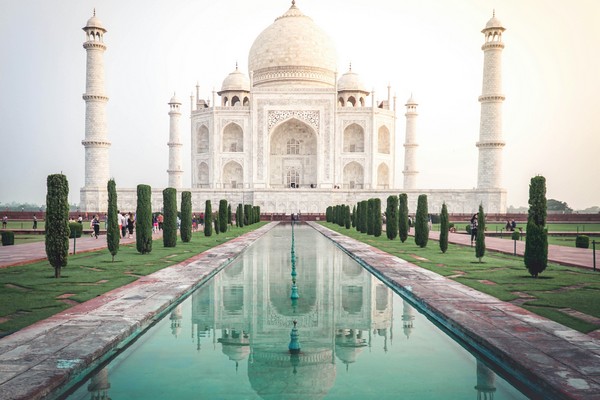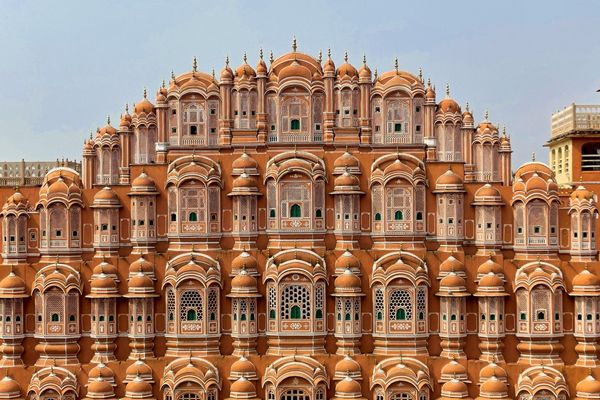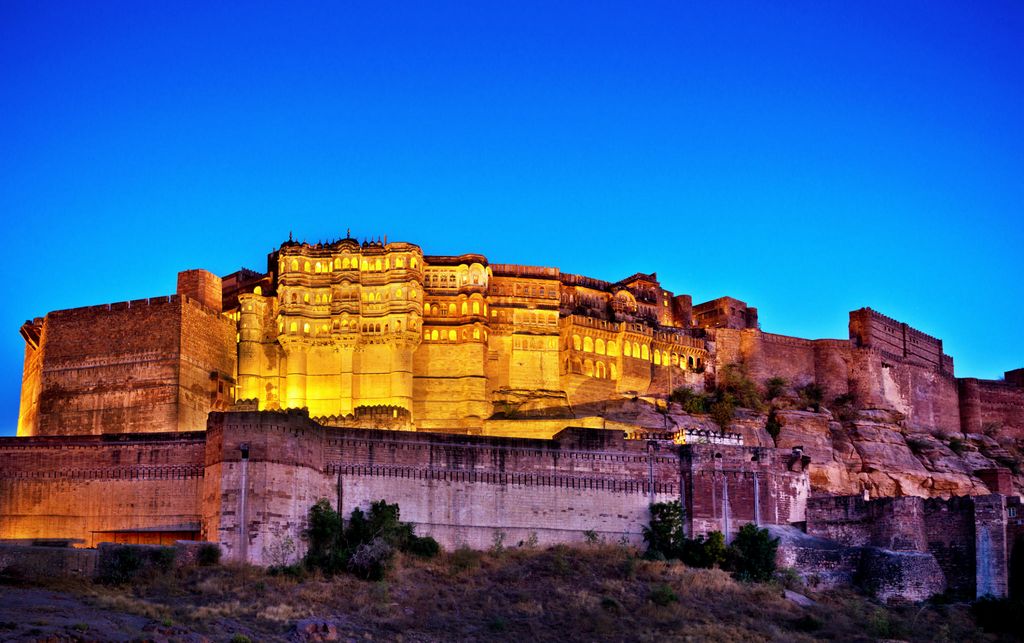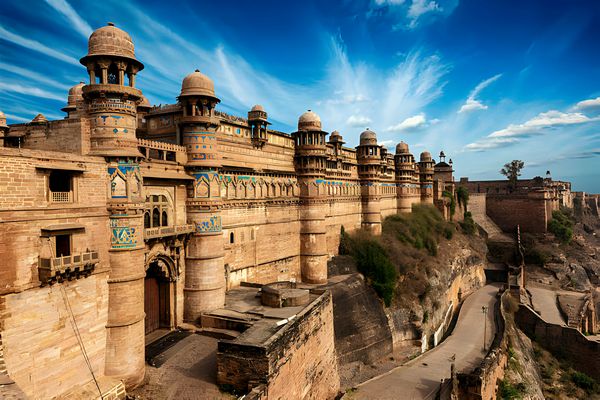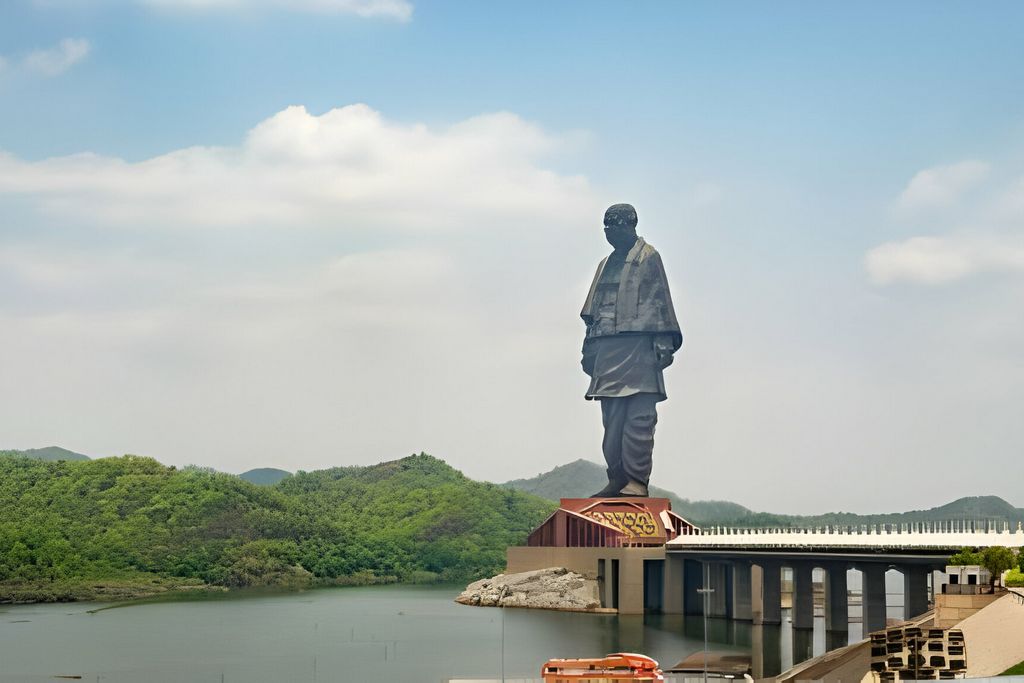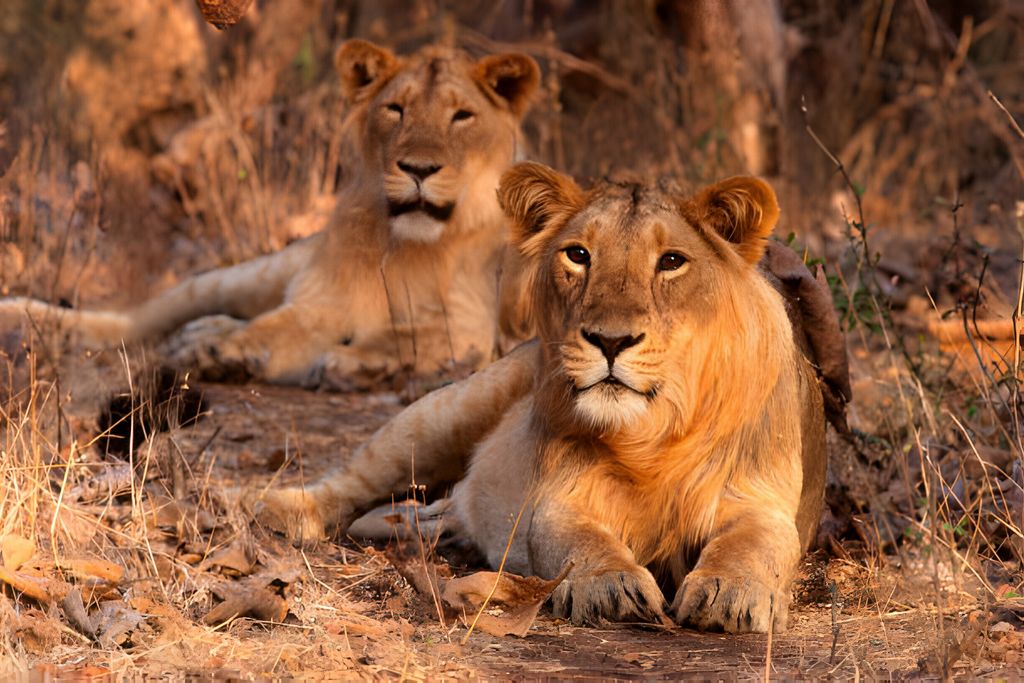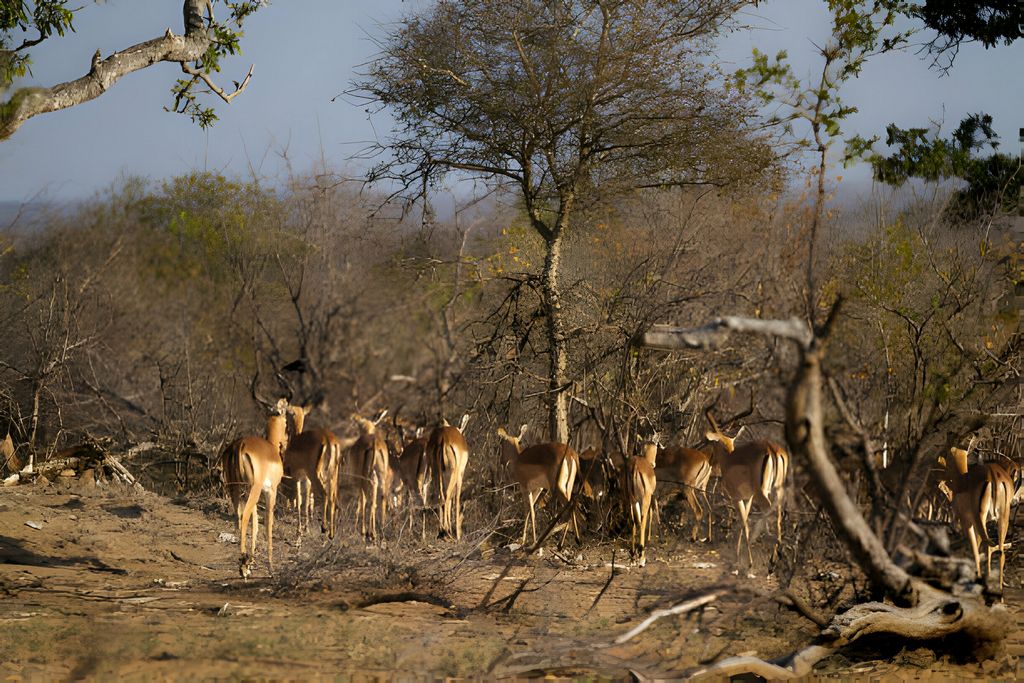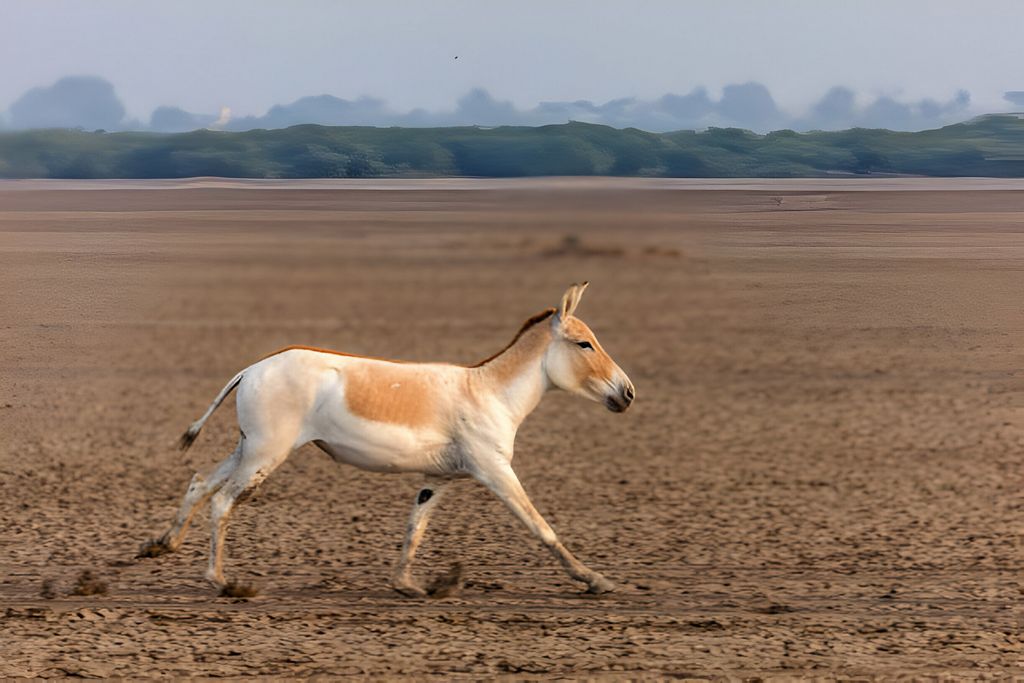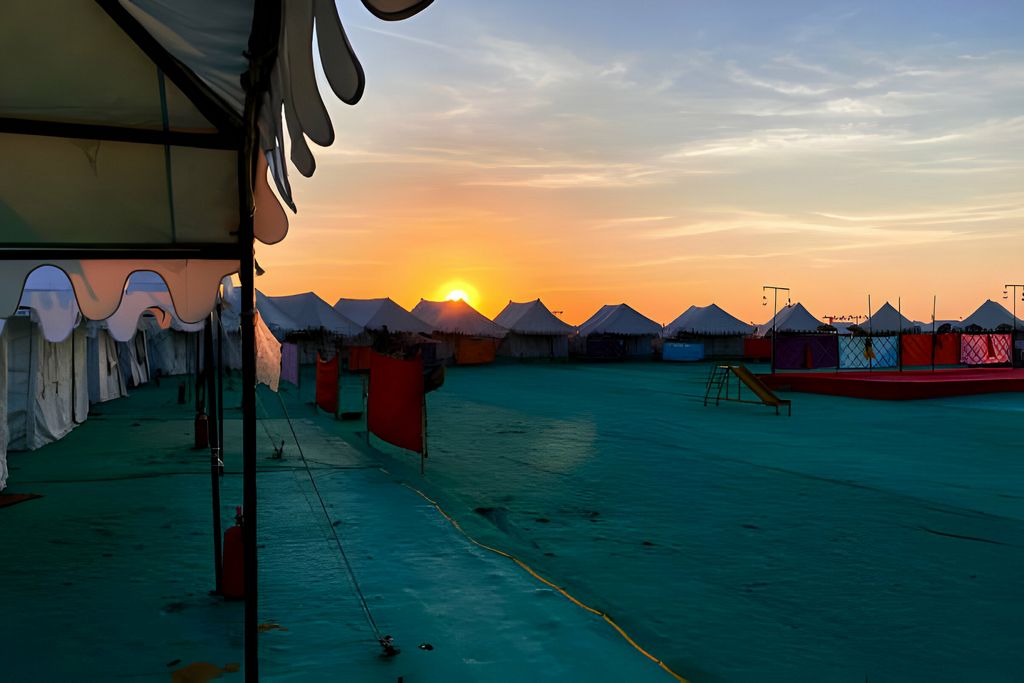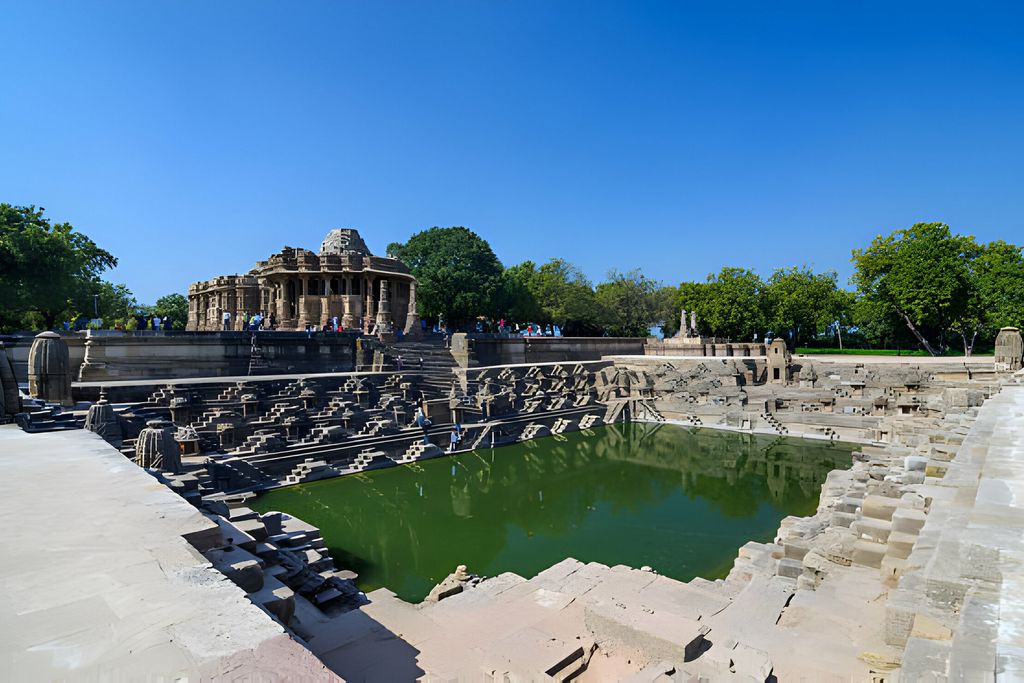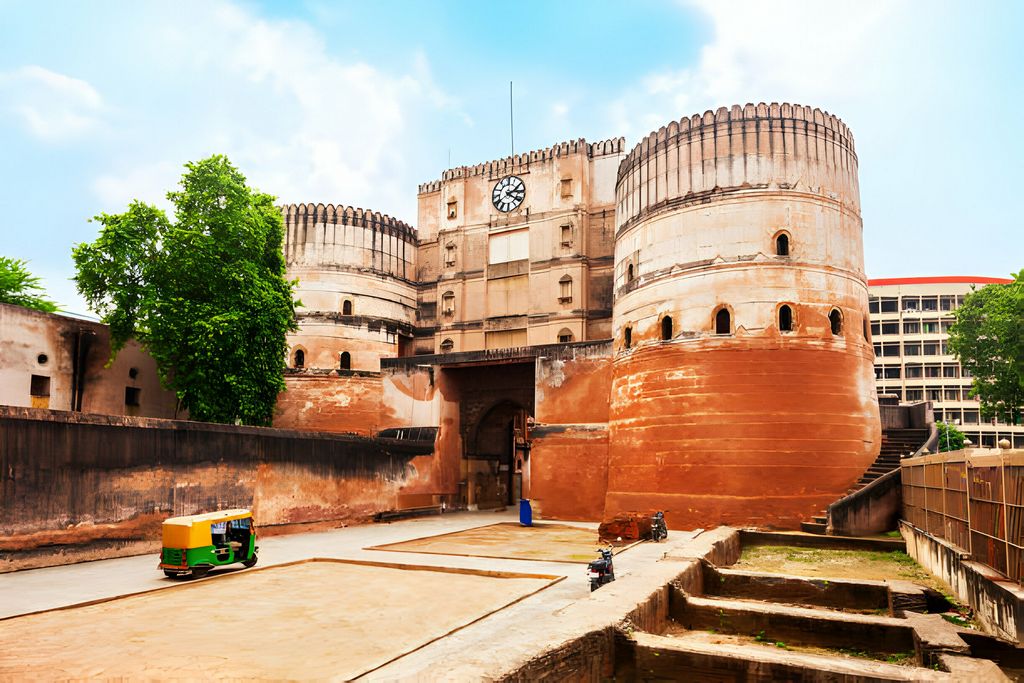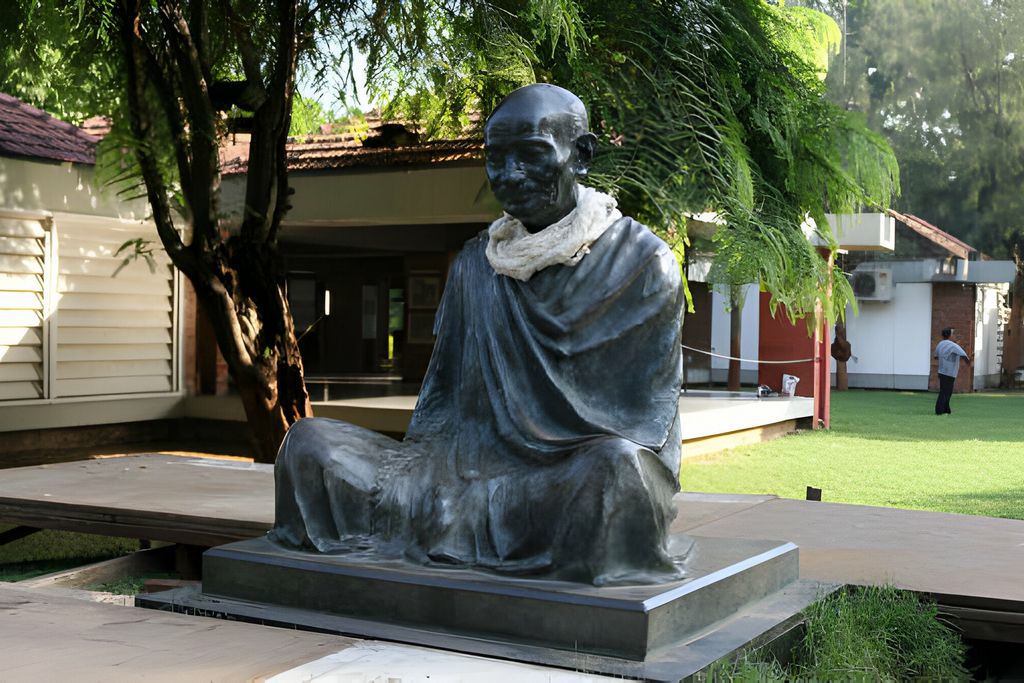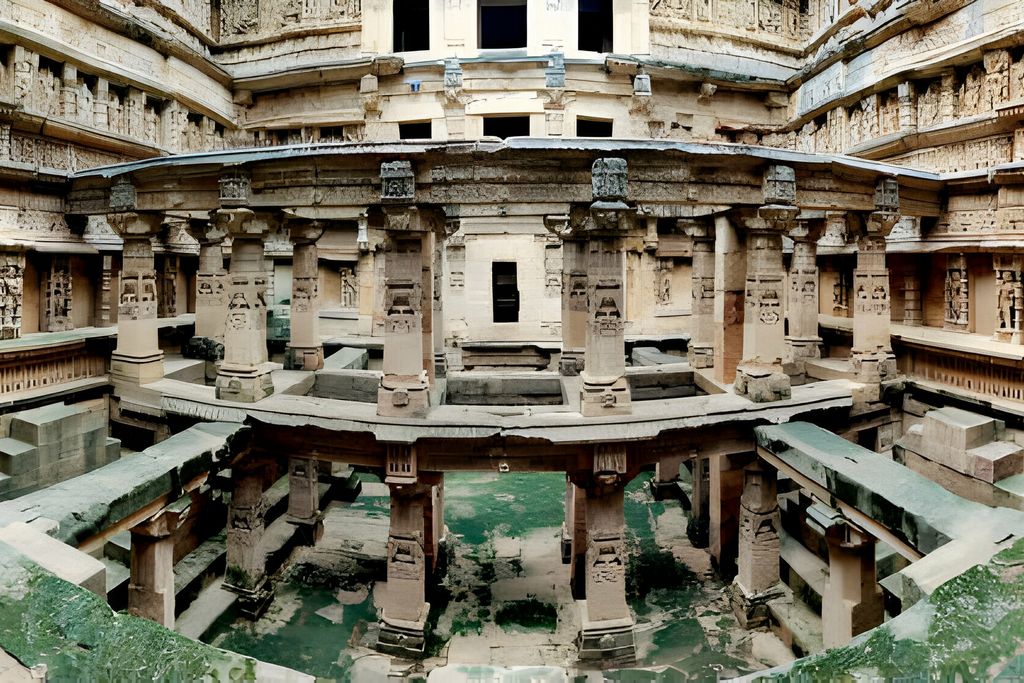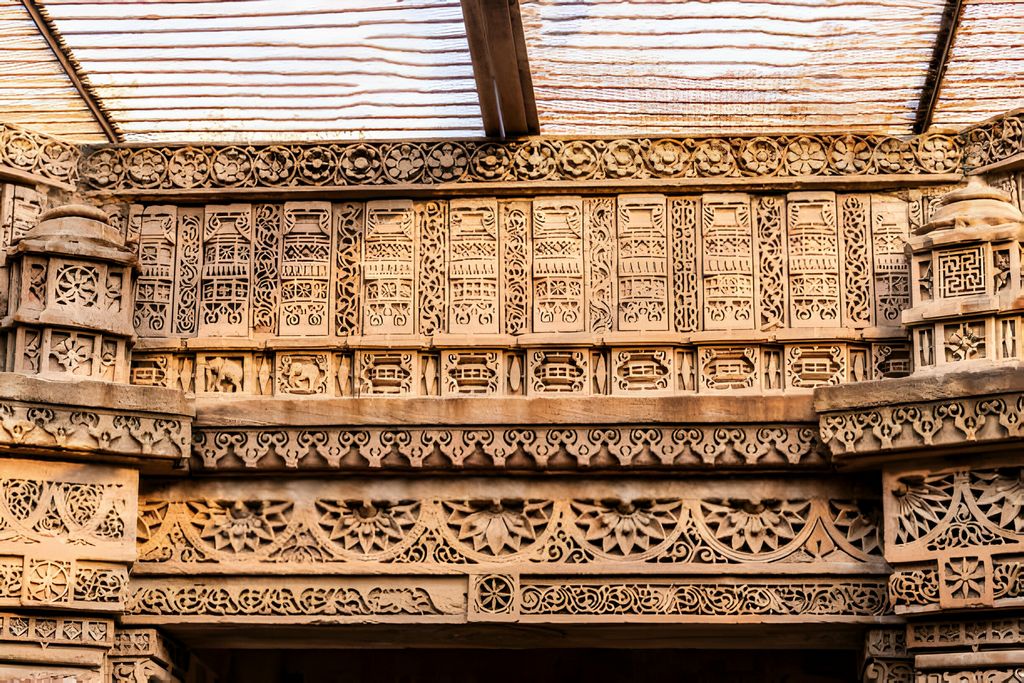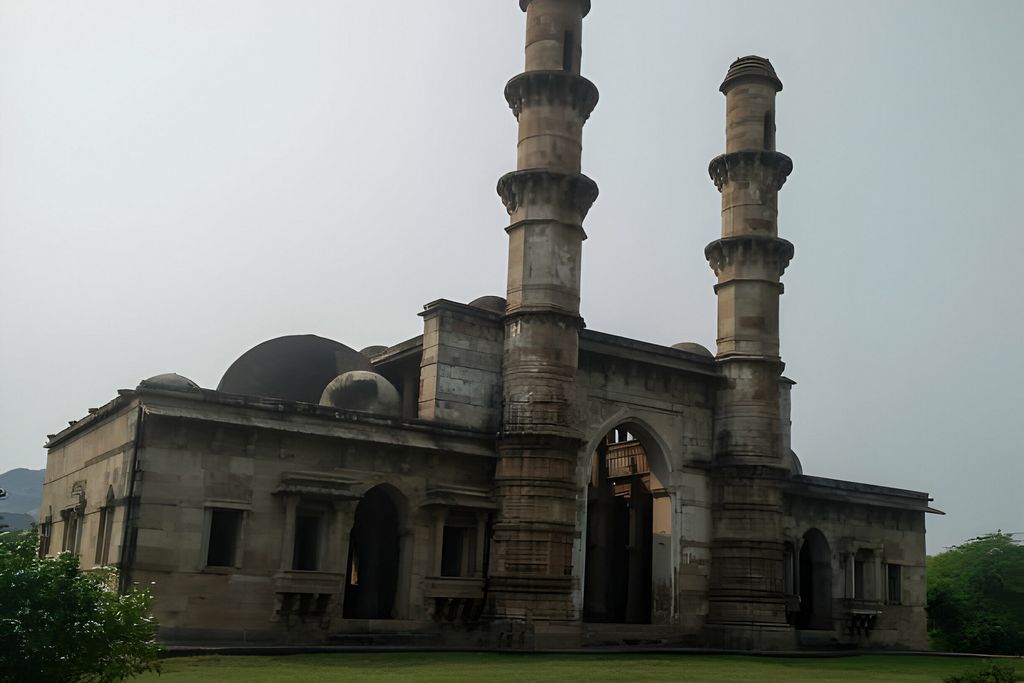Located on the western coast of India along the Arabian Sea, Gujarat encompasses the entire Kathiawar Peninsula, also known as Saurashtra, as well as adjacent mainland regions. This Indian state boasts the longest coastline of any state in the country, measuring approximately 1596 kilometers (992 miles). It is bordered by Pakistan to the northwest, the Indian states of Rajasthan to the north, Madhya Pradesh to the east, and Maharashtra to the southeast. Additionally, Gujarat shares a part of its southeastern border with the union territory of Dadra and Nagar Haveli, and it encircles the territories of Daman and Diu with the Arabian Sea. Gujarat is renowned for its distinct and rich cultural heritage, history, and diverse wildlife, making it a prominent destination for both wildlife and cultural experiences.
Wildlife Destinations in Gujarat
Gujarat, situated in the westernmost part of India, is renowned for its rich and diverse wildlife habitats. It boasts an array of ecosystems, from marine environments and wetlands to moist deciduous forests, making it a prime location for bird enthusiasts to observe a wide variety of bird species. This state is a haven for approximately 500 types of mammals, nearly 500 bird species, and a vast assortment of insects, fish, reptiles, and amphibians. With 4 National Parks and 21 Wildlife Sanctuaries under the management of the Government of Gujarat’s Forest Department, Gujarat stands as one of the premier wildlife and birding destinations, offering a dynamic range of landforms that cater to a myriad of species.
Gir National Park
Gir National Park is the sole remaining wilderness where the Asiatic Lion can be observed in their natural environment. Historically, their range extended across northern India, from Gujarat to Bihar. This area, however, became a popular hunting ground for Asiatic Lions among the British and the Nawabs of Junagadh up until 1960. Due to a drastic reduction in the Asiatic Lion population, the Indian government banned hunting. Gir is not just famous for its lion population but also for its rich bird diversity, hosting over 310 species of birds. This includes both resident birds and those migrating from across the globe.
The forest in Gir comprises mixed deciduous types, with a variety of trees such as Teak, Ber, Flame of the forest, Jamun, Acacia, and Banyan. The avian life in Gir includes the Malabar whistling thrush, painted storks, endangered species like Bonelli’s eagle, the crested hawk-eagle, the brown fish owl, the Indian eagle-owl, and others like the rock bush-quail, Indian peafowl, brown-capped pygmy woodpecker, black-headed oriole, crested treeswift, and the Indian pitta.
Total Area
- Core Area: 300 Sq. Km
- Buffer Area: 800 Sq. Km.
How to reach
- By Air: Rajkot airport – 180 Km
- By Train: Junagadh junction railway station – 60 Km & Veraval – 45 km
- By Road: Well connected to nearby cities: Junagadh – 60 Km & Veraval – 45 km
Best time to visit
During the winter season from November to March
Velavdar Blackbuck National Park
Spanning 34 square kilometers, Velavdar Blackbuck National Park is situated an hour north of Bhavnagar. The park is renowned for its captivating landscape of pale, custard-colored grasslands nestled between two seasonal rivers and is primarily celebrated for its population of blackbucks. These graceful antelopes boast spiraling horns that can reach up to 65cm in mature males and are known for their speed. Housing over 1800 animals, the sanctuary also serves as a habitat for blue bulls, which are the largest antelopes in India, and hosts a rich variety of avian species, with more than 120 different bird types observed within and around its boundaries. Notably, the park is a winter haven for approximately 2000 Siberian wintering harriers annually, alongside a haven for Demoiselle Cranes, Common Cranes, and a diverse range of Raptors, including the Certag Spotted Eagles and Steppe Eagles.
The park’s southern region features a small wetland area that draws an array of birds such as Pelicans, Flamingoes, Ducks, Waders, Coots, White storks, Painted storks, and Sarus cranes. It is acknowledged as one of the premier roosting sites globally for thousands of Harriers that migrate from Central Europe to spend the winter. Moreover, visitors might have the rare opportunity to spot wolves, especially if they visit early in the morning when sightings are more probable.
Total Area
- Area: 34 Sq. Km
How to reach
- By Air: Bhavnagar airport – 50 Km & Ahmedabad – 145 Km
- By Train: Bhavnagar railway station- 50 Km
- By Road: Good road connectivity from nearby cities
Best time to visit
From monsoon to Winters season
Marine National Park & Sanctuary
Off the northern coast of Jamnagar and the southern coast of Kutch in India lies a remarkable marine conservation area comprising 42 tropical islands known as the Gulf of Kutch Marine Wildlife Sanctuary and Marine National Park. Established in 1980 and 1982, respectively, these areas mark a pivotal step forward in the recognition and implementation of conservation efforts for marine ecosystems. The sanctuary, situated in the intertidal zone, reveals one of India’s most diverse marine habitats when the tide recedes. This includes mudflats, rocky shores, sandy beaches, marshes, saline grasslands, creeks, estuaries, coral reefs, and mangroves.
The region is home to a vast array of marine life and bird species, making it a critical habitat for conservation. It supports 70 species of sponges and boasts coral diversity with 52 species, including 44 types of hard coral and 10 types of soft coral. The bird population is equally impressive, with nearly 90 species recorded, including the Painted Stork, Darter, and Black-necked Ibis, which find the sanctuary’s mangroves ideal for breeding.
The coral reef fringe islands, such as Pirotan, Narula, Ajad, and Poster, are notable features within the park. The area is distinguished by seven species of mangroves that play a crucial role in maintaining the delicate balance between saltwater and freshwater ecosystems and in protecting the coastline from erosion.
Marine fauna is abundant and diverse, including endangered species like whale sharks, green sea turtles, olive ridleys, and leatherbacks. Additionally, the sanctuary’s waters are inhabited by an array of other marine creatures, including jellyfish, 27 species of prawns, 30 species of crabs, and various crustaceans such as lobsters and shrimps. Mollusks like pearl oysters and sea slugs, along with echinoderms such as starfish, sea cucumbers, and sea urchins, can also be found here. Fish species range from pufferfish and seahorses to stingrays, mudskippers, and more, making the Gulf of Kutch a vital haven for marine biodiversity.
Total Area
Area: 163 Sq. Km is the area of Marine National Park
How to reach
- By Air: Jamnagar airport – 07 Km & Ahmedabad – 350 Km
- By Train: Jamnagar railway station- 07 Km &
- By Road: Good road connectivity from nearby cities
Best time to visit
The month of October and March is a good time to visit Marine National Park
Rann of Kutch
Spanning both India and Pakistan, the Rann of Kutch comprises vast salt marshes, primarily situated in Gujarat’s Kutch district in India and Sindh in Pakistan. This region is bifurcated into the Great Rann and the Little Rann of Kutch. On the Indian side, it features a number of protected areas and wildlife sanctuaries, including the Narayan Sarovar and the Kutch Great Indian Bustard Sanctuary, which are significant conservation sites.
Great Rann of Kutch
The Thar Desert, located in Gujarat’s Kutch District in India, features a seasonal salt marsh known as one of the world’s largest salt deserts. This area transforms during the summer monsoon when the typically flat, semi-desert terrain of salty clay and mudflats, standing an average of 15 meters above sea level, becomes inundated with water. In particularly rainy years, this wetland stretches from the Gulf of Kutch in the west to the Gulf of Khambhat in the east. Visitors can explore key conservation sites such as the Kutch Desert Wildlife Sanctuary and the Chari-Dhand Wetland Conservation Reserve. These areas are notable for the remarkable sight of thousands of flamingos in their breeding colors, as well as common cranes, painted storks, spoonbills, and numerous other wetland birds.
Cultural Destinations in Gujarat
Gujarat, a state in India, is a magnet for both nature lovers and those fascinated by historical and cultural treasures. The state is dotted with remnants from its glorious past, including ancient ruins of cities, majestic palaces, formidable forts, and solemn tombs, all telling tales of the eras ruled by various dynasties, invaders, and traders. The rich history of Gujarat is woven into the fabric of its present, visible through the myriad historical and ancient ruins spread throughout the region. From imposing forts and quaint Havelis to exquisite step-wells and numerous other heritage sites, Gujarat offers a glimpse into its illustrious heritage. Here are some of the premier locations to explore the state’s profound cultural legacy.
Ahmedabad
In 2017, Ahmedabad was designated as a UNESCO World Heritage Site, often referred to as the “Manchester of the East” or “Amdavad.” This historic city, founded in 1411, lies on the ancient grounds of Ashaval and Karnavati. It boasts a rich collection of Islamic and Indian monuments, along with stunning Jain and Hindu temples. Initially, the area was known as Ashaval or Ashapalli, settled along the Sabarmati River’s southern banks, with Asha Bhil as its ruler. Later, in the 11th century, Karna from the Chaulukya dynasty, ruling from Anhilwad Patan between 1072 and 1094, chose this town as his capital. He renamed it Karnavati (Karan’s town), also known as Shrinagar (prosperous city) and Rajnagar (king’s town). Ahmedabad’s top attractions highlight its historical and architectural significance.
Heritage walk of Ahmedabad
It 2-hour heritage walk starts from Swami Narayan Temple at 0730 hrs. And ends at Jama Masjid. The total length of this walk is 2 Km
The Calico Museum of Textiles
In 1949, Gautam Sarabhai and Gira Sarabhai, two visionary siblings, established the museum amidst the booming textile industry of Ahmedabad. Initially, it found its home within Calico Mills, located at the center of the textile sector. However, due to the expansion of its collection, the museum relocated to the Sarabhai House in Shahibaug by 1983. It remains closed on Wednesdays and National Holidays.
Bhadra fort
In 1411 AD, Ahmed Shah, who established the city, constructed Bhadra Fort. The name of the fort is derived from the adjacent Bhadrakali Temple. Known as Aark fort in earlier centuries, it fell into British hands in 1817, who then utilized it as a prison until the country gained independence.
Sabarmati Ashram
The Sabarmati Ashram stands as evidence of Mahatma Gandhi’s contribution to the nation’s freedom. It functions akin to a museum, showcasing a variety of paintings and photographs that illustrate Gandhi’s existence. Within his cottage, Hriday Kunj, several of his personal items are exhibited. Additionally, the library houses an extensive collection of books focused on his life and the freedom struggles.
Rani Ki Vav, Patan
In 1063, the stepwell, later designated as a UNESCO World Heritage Site in 2014, was initiated by Rani Udayamati of the Chaulukya Dynasty in memory of her husband, Bhimdev I. It was completed two decades later, as recorded by Merutunga, a Jain monk, in 1304, stating that Udayamati, Naravaraha Khangara’s daughter, was responsible for its construction in Patan. Archaeologists Henry Cousens and James Burgess, in the 1890s, encountered the stepwell buried under silt, with only its shaft and a few pillars visible. Rediscovered in the 1940s, it underwent restoration by the Archeological Survey of India during the 1980s.
Adalaj ni Vav, Gandhinagar
Constructed in 1411 by Mahmud Begada to commemorate Queen Rudabai, the wife of the Vaghela chieftain Veersinh, this stepwell has played a crucial role both spiritually and practically for its community. It has been a source of water for people from nearby villages for centuries, who came to collect water in their containers. Today, the stepwell still astonishes many with its beauty and has largely preserved its splendor from the flamboyant 15th century. Its architecture, a blend of Indo-Islamic styles, is evident in the detailed carvings on the pillars that support its five levels. These pillars not only hold up the structure but also provide perching spots for pigeons. The beams and overall design continue to captivate visitors, showcasing the structure’s enduring appeal and historical significance.
Dholavira, Great Rann of Kutch
Dholavira, a site from the Indus Valley Civilization or Harappan culture, stands out as one of the two most impressive archaeological discoveries, dating back 4500 years. Unlike Lothal, which is better known and more accessible, Dholavira offers a unique glimpse into the innovative minds of the Harappan era. It showcases one of the earliest and most sophisticated systems for water conservation and possibly the world’s first signboards, inscribed in ancient Indus script. This is all set against the challenging backdrop of the Great Rann of Kutch. In 2021, UNESCO recognized the significance of Dholavira in Kutch by listing it among the World Heritage Sites. Visiting Lothal complements but does not replace the experience of exploring Dholavira.
Champaner and Pavagadh
Nestled in Gujarat, Champaner and Pavagadh together form a UNESCO World Heritage Site renowned for its historical splendor. Stretching from the eighth until the fourteenth century, this site encompasses a plethora of monuments, including mosques, temples, forts, tombs, step-wells, arches, and fortresses, with Pavagadh overlooking the expanse from atop a hill and Champaner sprawling at its base. Initially, Pavagadh served as the capital for the Chauhan Rajputs around the year 1300. However, in 1484, after enduring a siege that lasted 20 months, it fell into the hands of Gujarat Sultan Mahmud Begada. Facing defeat, the Rajputs chose to perform Jauhar, a ritual mass suicide. Sultan Mahmud Begada subsequently turned Champaner into a splendid new capital. The area’s significance shifted once more in 1535 when Mughal emperor Humayun captured Champaner, leading to the reestablishment of Ahmedabad as the capital and resulting in Champaner’s decline into ruins.

